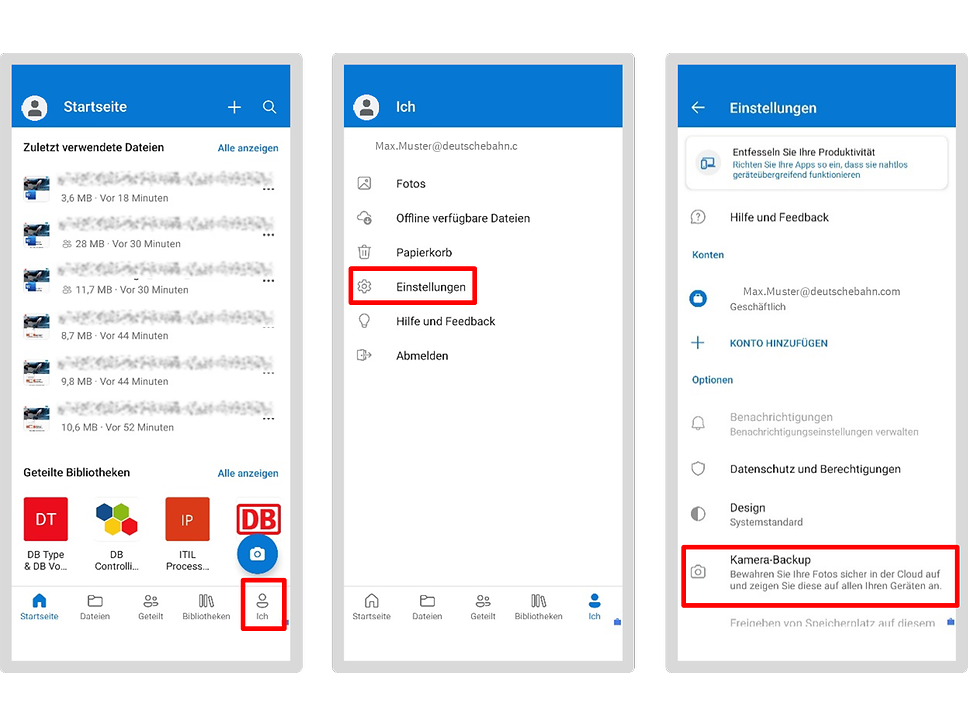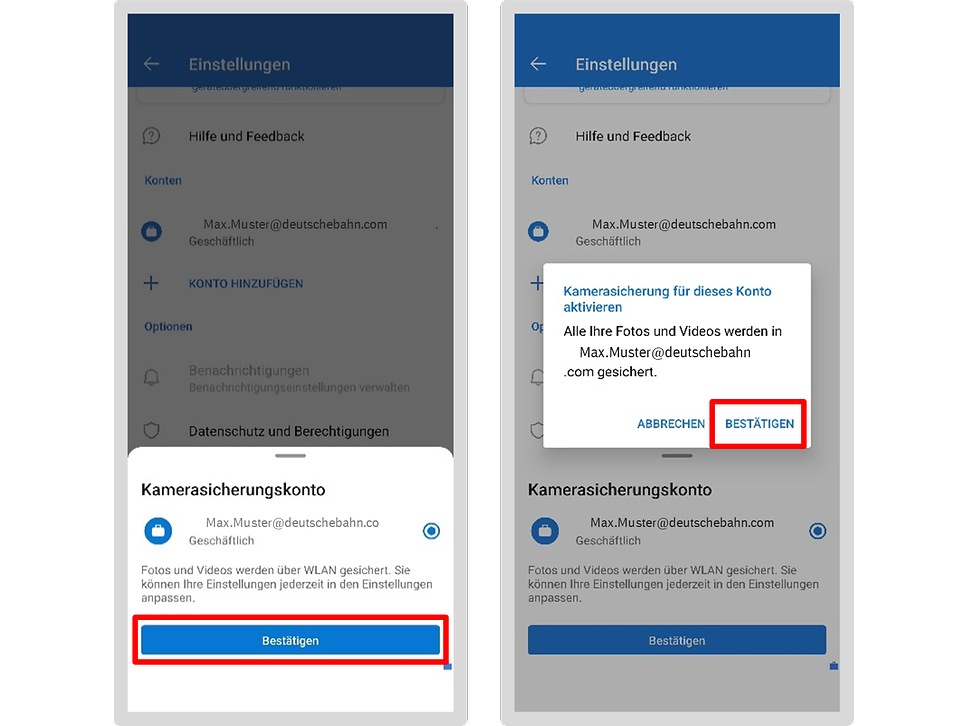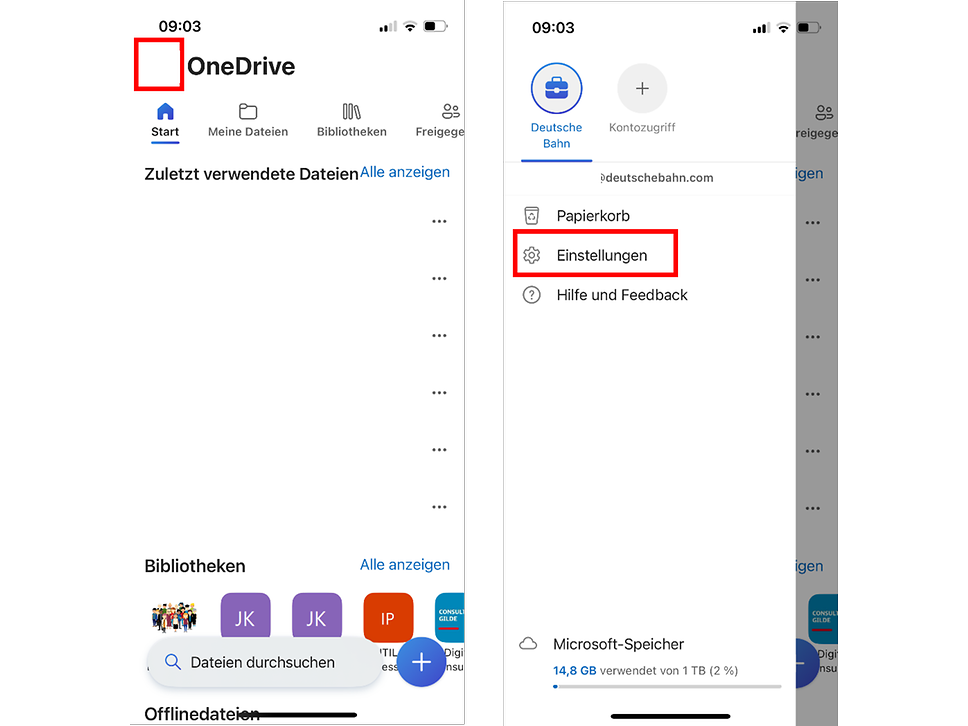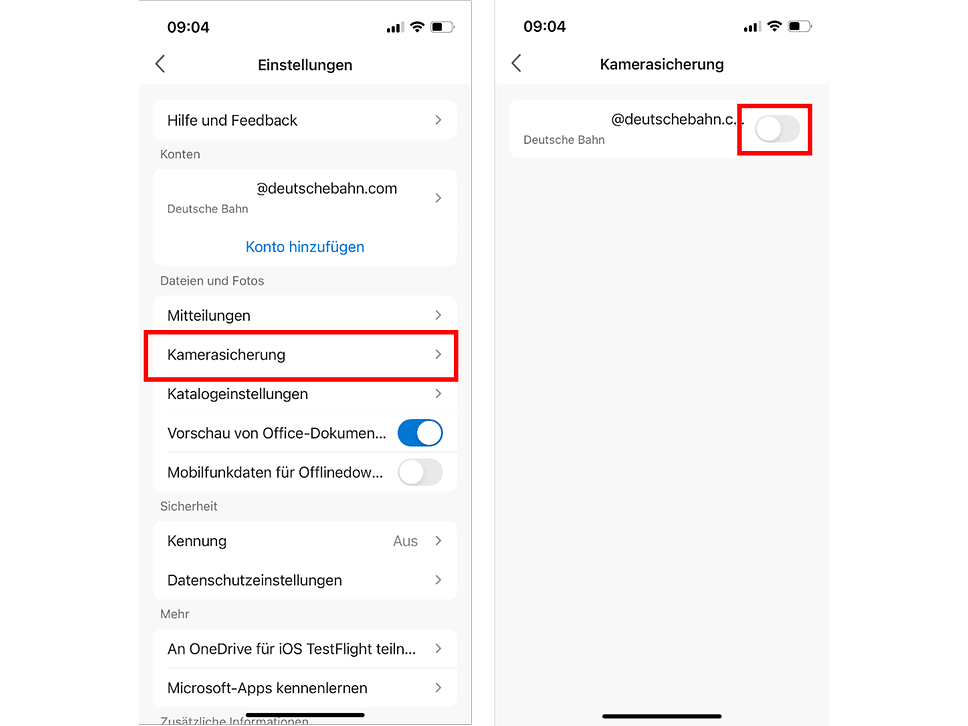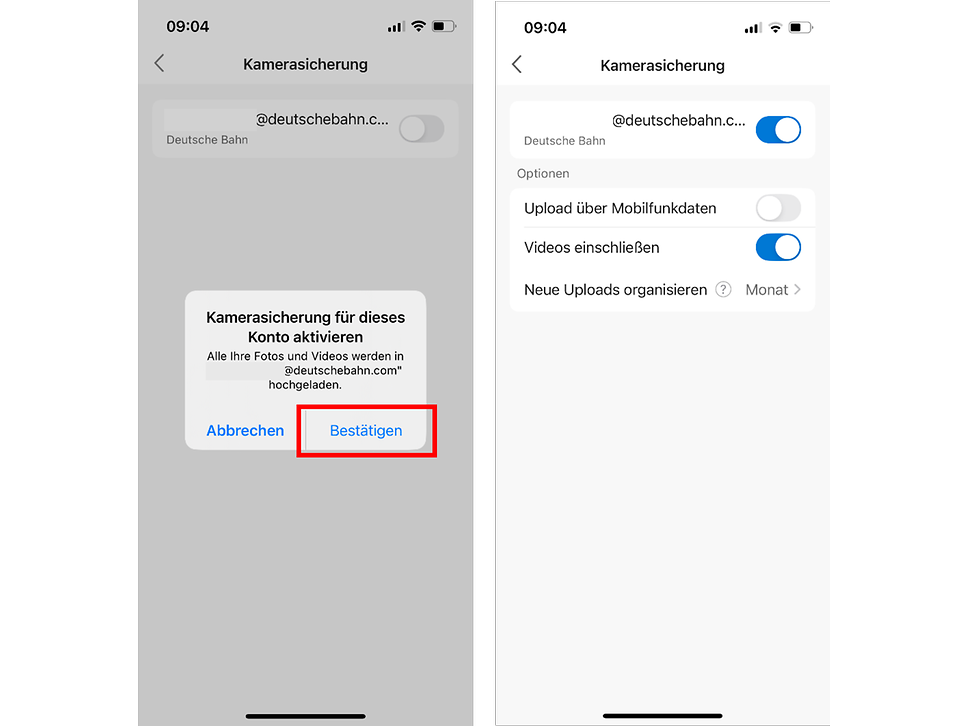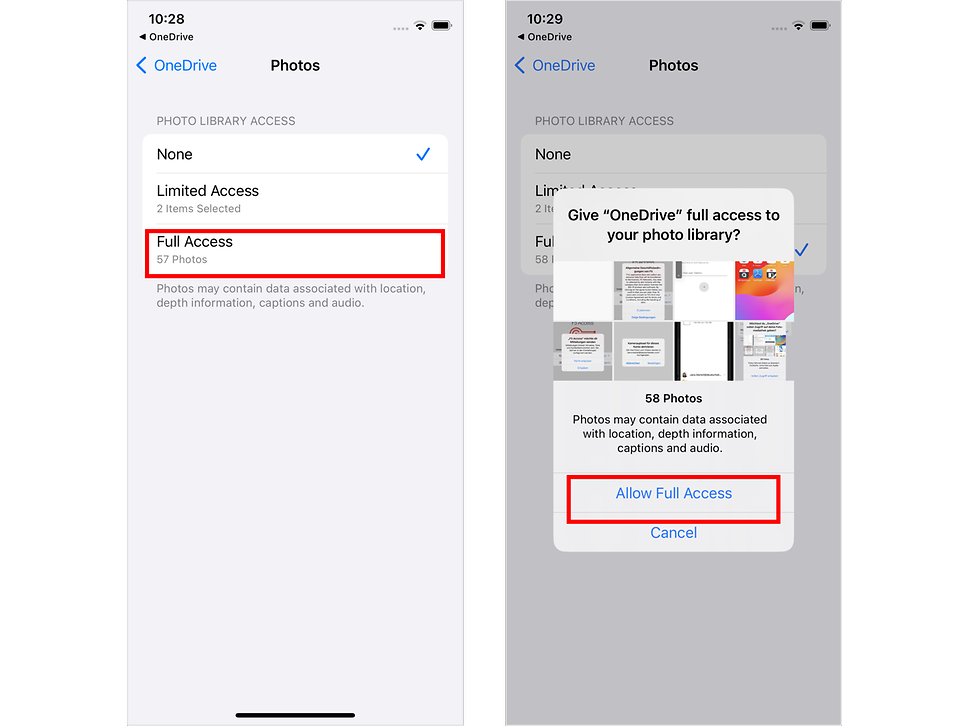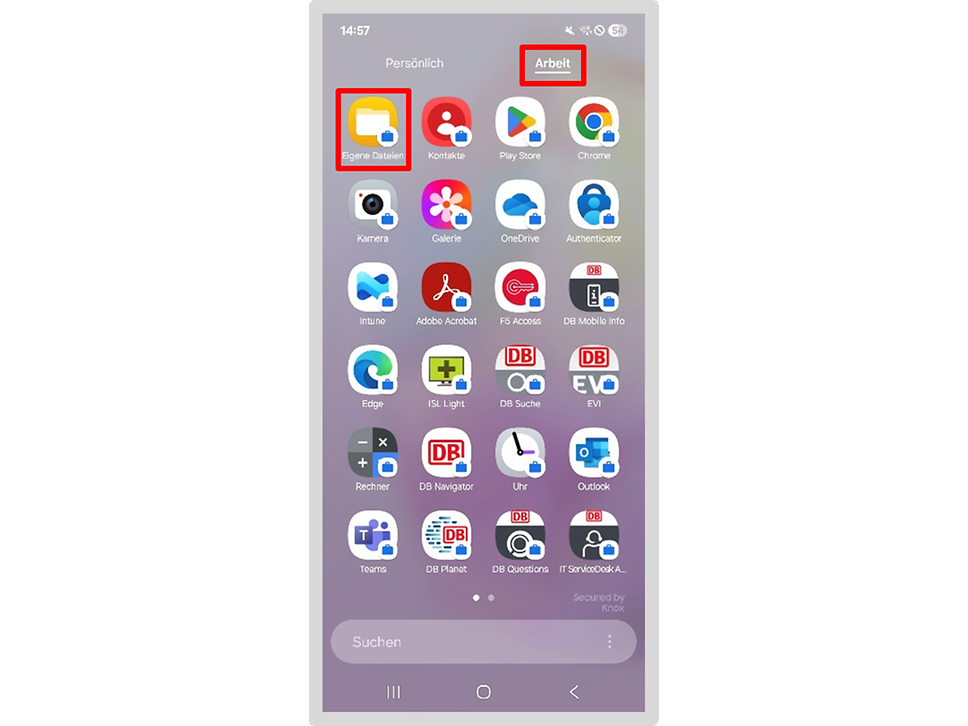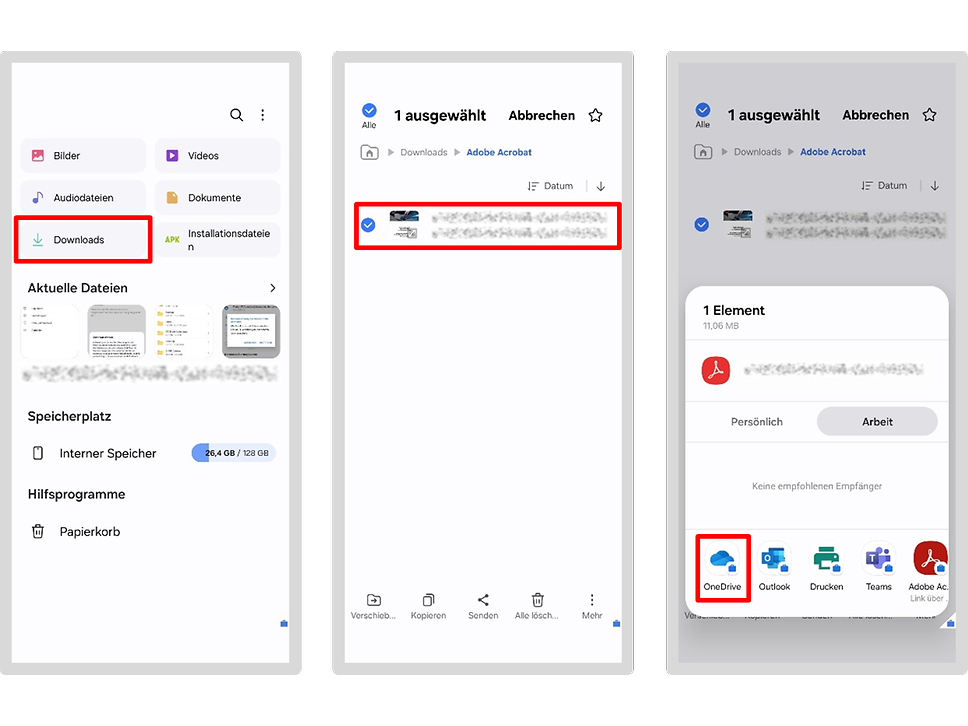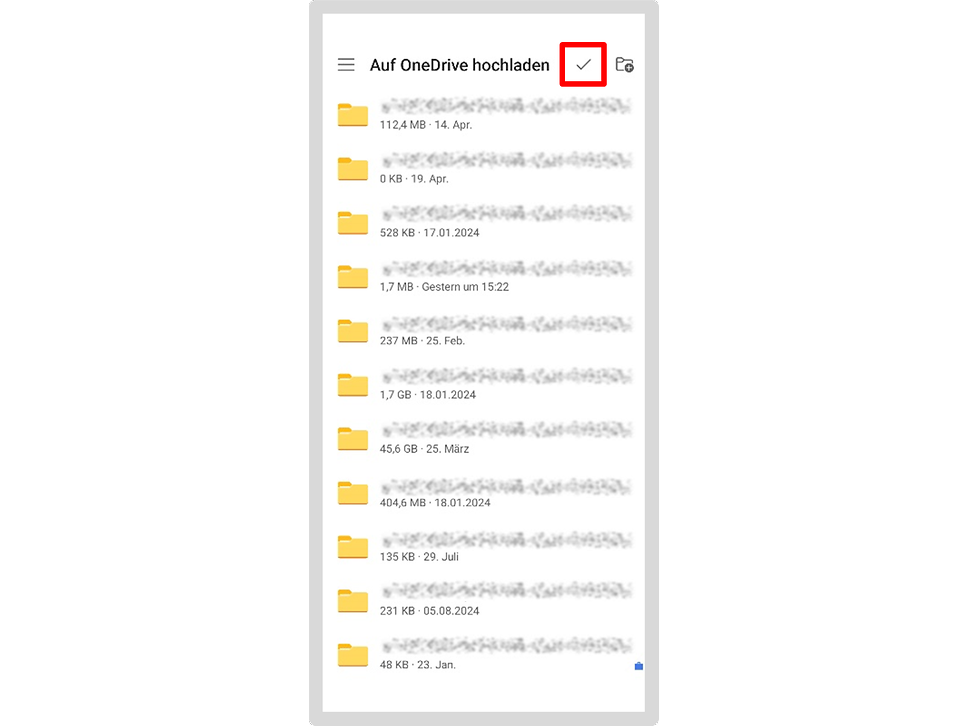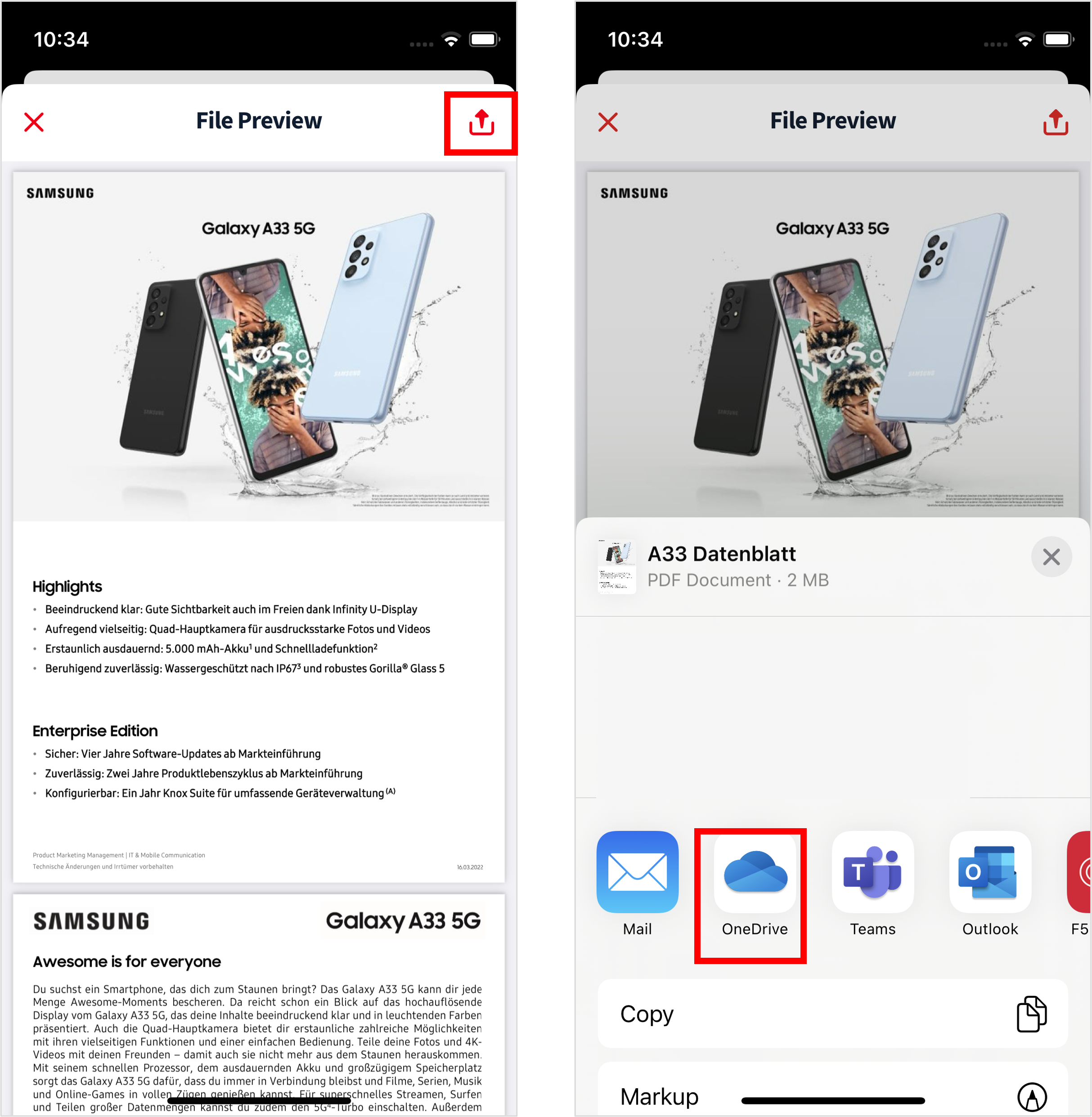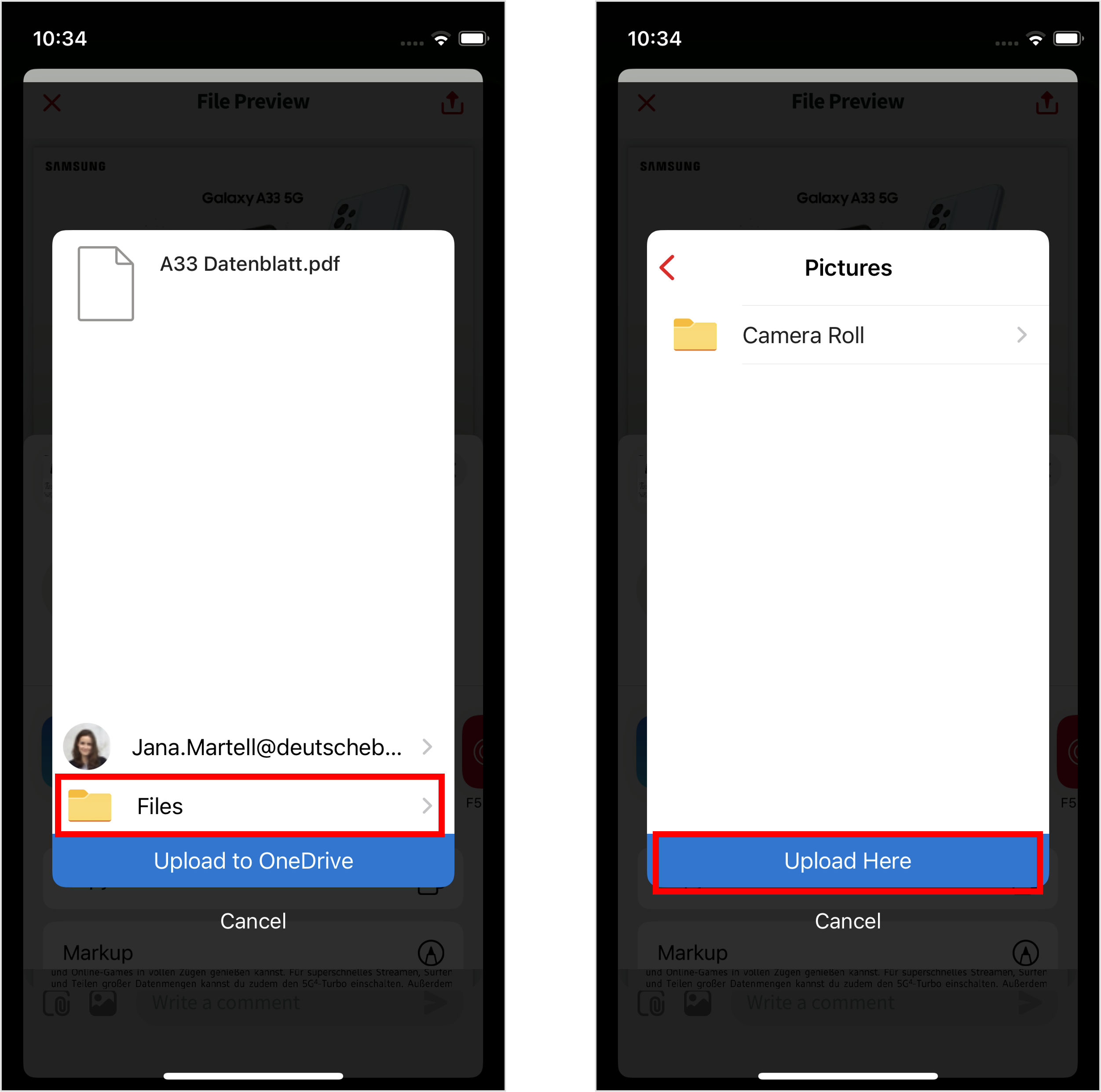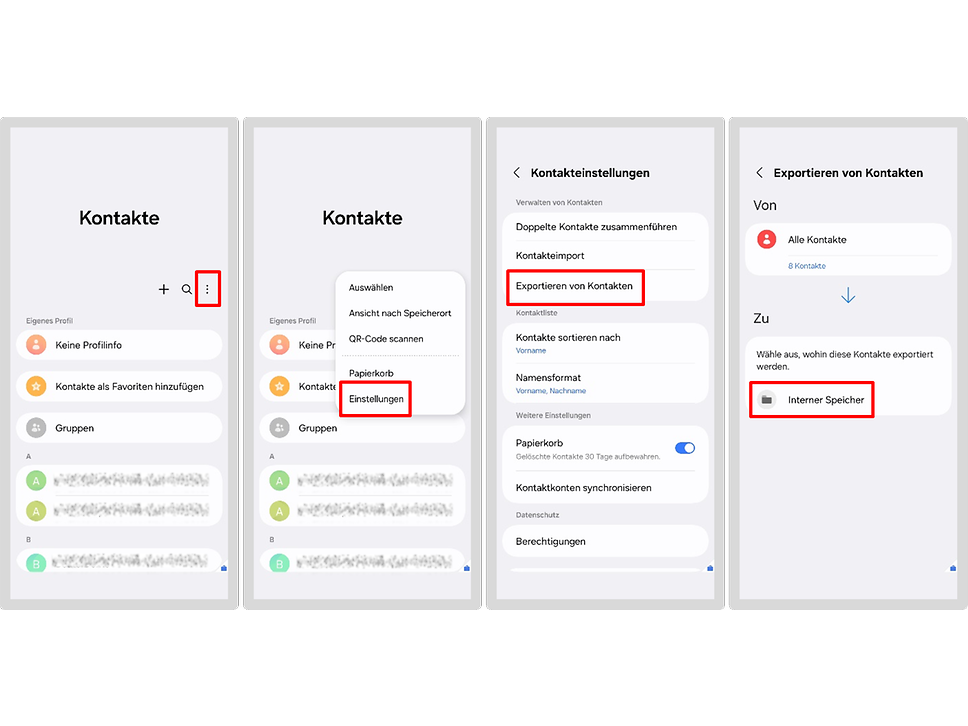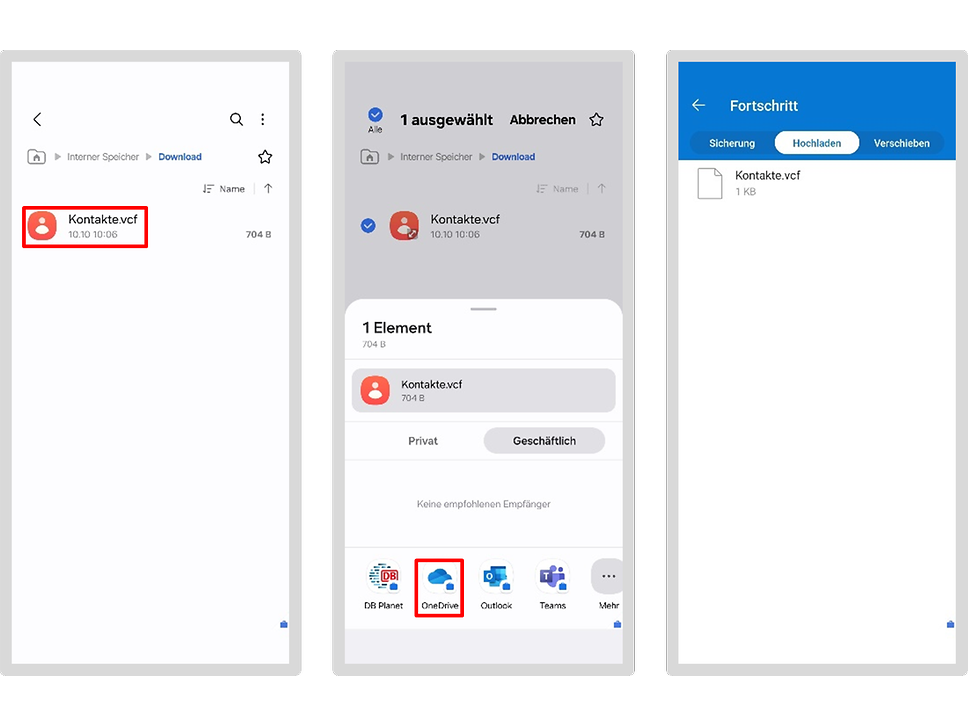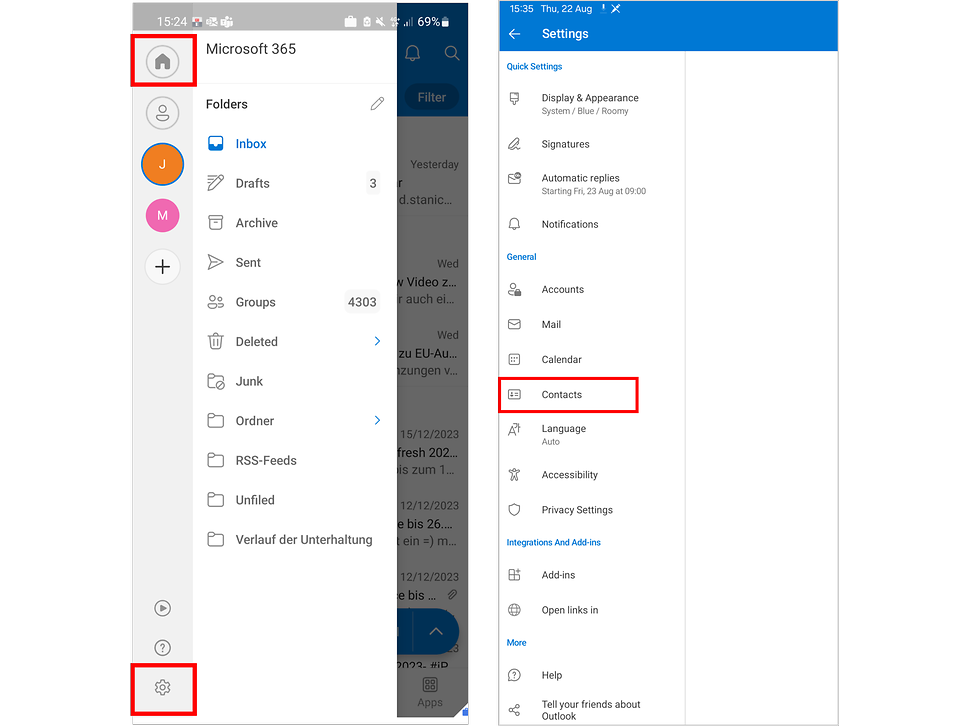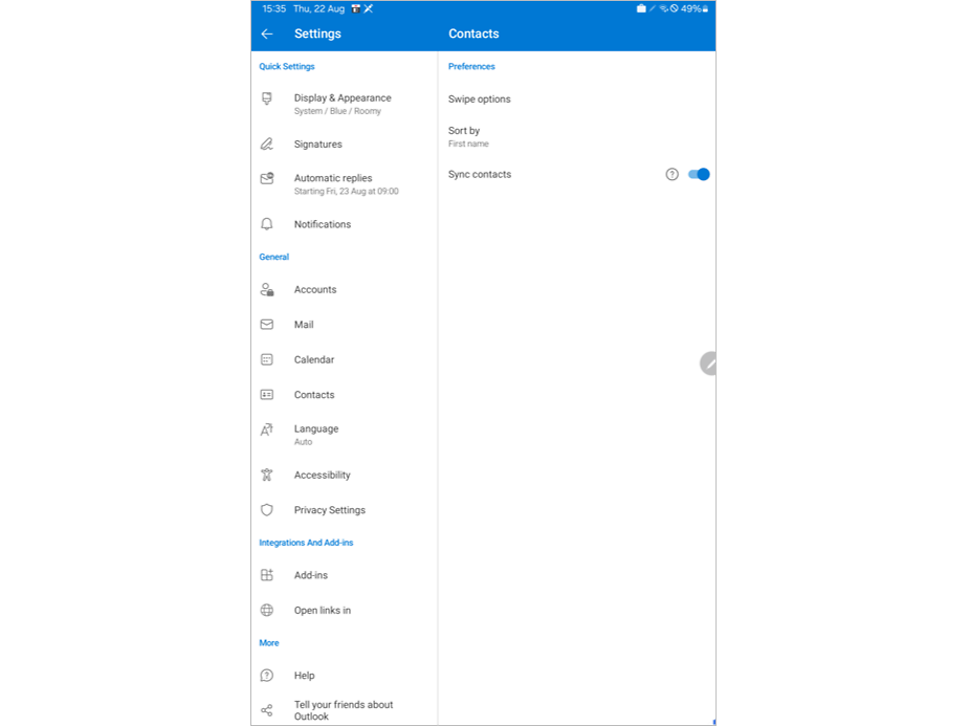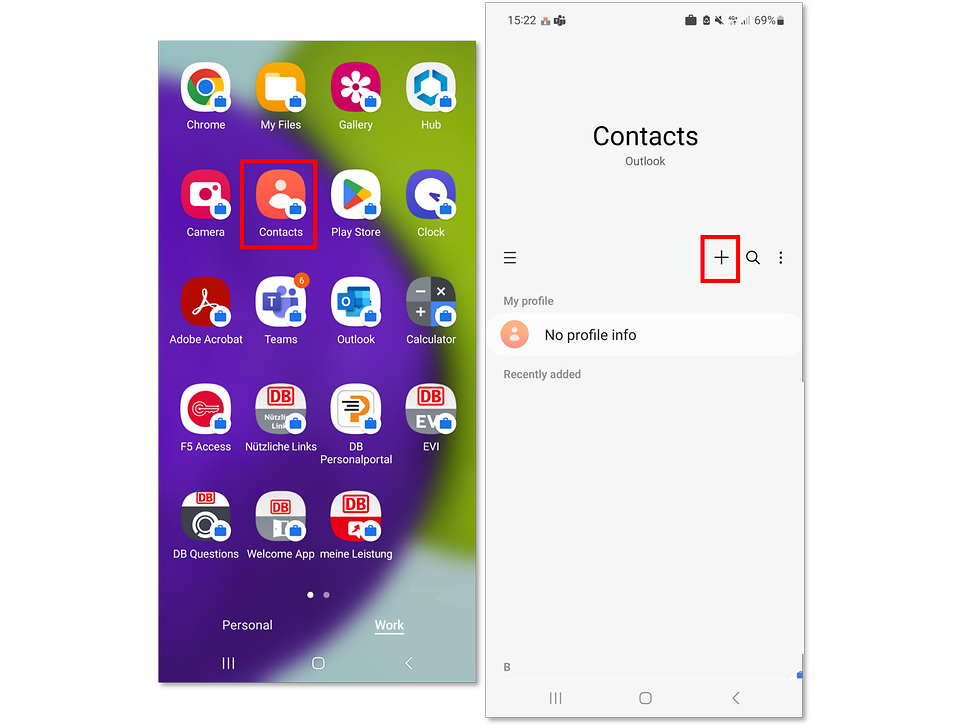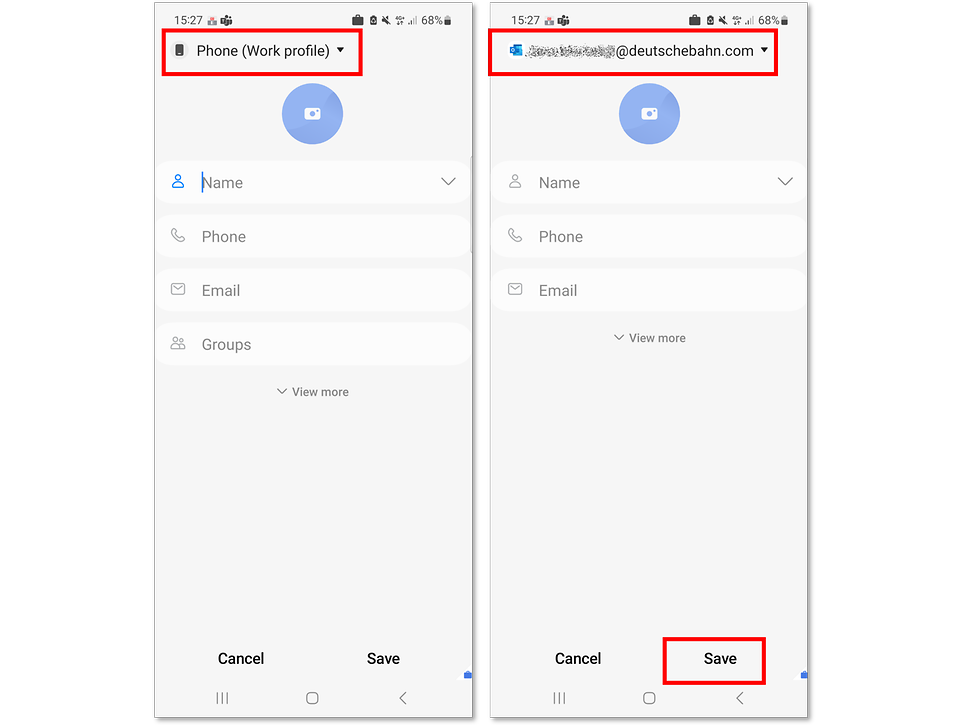Article: Backup Data
Backing up work data
Back up your work photos and documents, such as PDF or Word files, in the "OneDrive" app.
With OneDrive, you can save all your work data in a cloud and then access it at any time using all your work devices (smartphone/tablet and PC).
Here we show you how to set up the OneDrive app:
Setting up OneDrive
All Smartphones/Tablets
Prerequisite: To set up OneDrive, first install the Outlook app on your smartphone/tablet and set up your work email account.Then proceed as follows:
- Hold your tablet in portrait mode to ensure that the screens have the same layout as in the instructions
- Download the "OneDrive" app. To do this, open the DB Google Play Store
- Search for the app "Microsoft OneDrive"
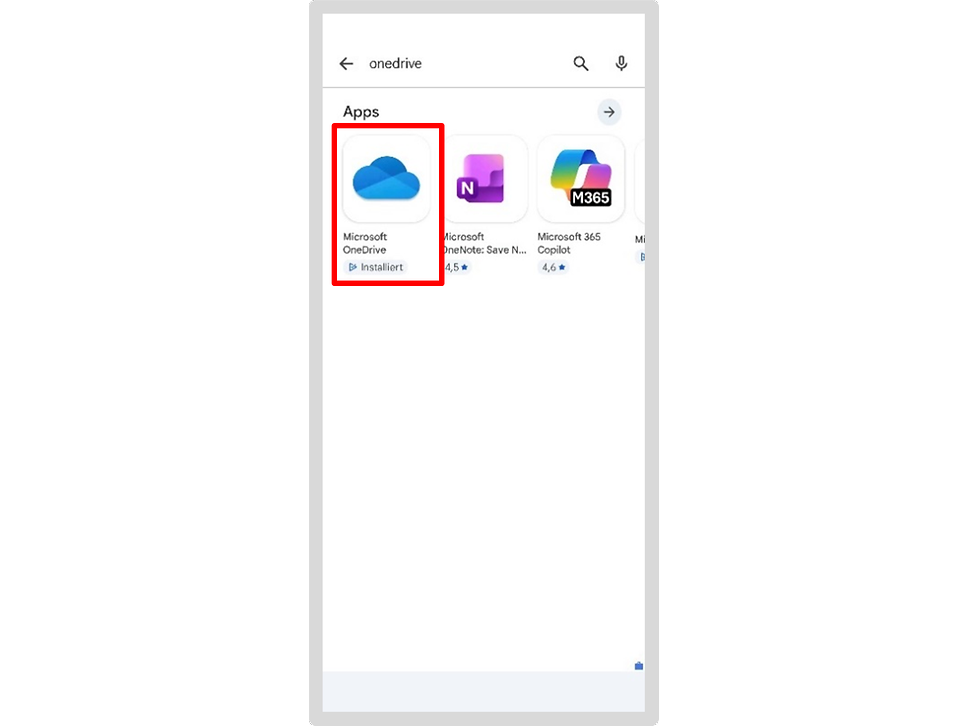
- Open the OneDrive app by tapping on the icon
- Confirm that the app is allowed to send you notification
- Select "Sign in"
- Enter your DB email address - you will be logged in automatically
- Select your DB User certificat
- You will now see all your files in OneDrive
- Enter your DB email address - you will be logged in automatically
- Select your DB User certificate
Please note: If you set up OneDrive again, it may take a few minutes for all your data to be synchronised.
Back up photos and videos
Samsung, Nokia, Gigaset
If you want to save your photos automatically in OneDrive, proceed as follows:
- Open the "OneDrive" app
- Tap the "Profile" icon at the bottom right and then select "Settings"
- Then select "Camera backup"
- Then tap "Confirm" twice
The next step is to authorise OneDrive to access your photos and camera. To do this, proceed as follows:
- After you have confirmed twice, you will receive an error message saying that OneDrive permissions are missing
- Then tap on the right-hand button "Customise settings"
- You will then be taken to the settings for the app permissions
If no error message appears or you have clicked it away:
- Navigate to the "Apps" section under your "Settings"
- Then select the "OneDrive" app under "Work"
- Tap on "Permissions"
- Tap once on "Camera" and then on "Photos and videos" to grant OneDrive permissions
- Decide for yourself whether OneDrive should ask you each time or whether you want to permanently allow access while using the app
- Once synchronisation has been set up, every photo taken via the camera is synchronised with OneDrive
iPhone/iPad
- Tap the round icon or your profile picture in the top left-hand corner.
- Then select "Photos" from the menu.
- The message "Camera upload is deactivated" appears at the top.
- Tap on the "Activate" button to the right of it
- Activate the slider next to your e-mail address.
- Tap "Confirm" in the dialogue box asking whether pictures and videos should be synchronised with OneDrive
- Activate the camera backup: Tap on the "Go to settings" app button.
- You are now in the settings of your smartphone/tablet.
- Tap on "Photos".
- Then tick "Full access" to allow OneDrive to save the photos and videos.
- Tap on "Allow full access".
- Return to the OneDrive app.
Once synchronisation has been set up, every photo taken via the camera is synchronised with OneDrive.
Note: If you also use your iPhone/iPad privately, select "Restricted access" and only select the work-related photos and videos to be uploaded.
Backing up PDF documents
Samsung, Nokia, Gigaset
PDF files are usually saved in the download directory in the "Work/Business" area. To save these to OneDrive, proceed as follows:
- Open the "My Documents" app
- Tap on "Downloads"
- Long press on the PDF file until a tick appears in front of the name
- Tap on "Send" at the bottom of the menu bar and then select "OneDrive"
- Your personal folder in OneDrive will be displayed
- If this is not the correct storage location: Tap on the hamburger menu (three stripes) in the top left-hand corner
- Select the folder in which you want to save the PDF file and then tap the white tick in the top right-hand corner
- The file will now be uploaded to OneDrive
- The file will now be uploaded to OneDrive.
iPhone/iPad
Save contacts
Samsung, Nokia, Gigaset
Back up contacts to OneDrive: Would you like to change your smartphone/tablet and take the contacts stored on the device with you? Here's how:
- Swipe up on the home screen
- Tap "Work" at the top right
- Open the "Contacts" app
- Tap ⋮ (three-dot menu) at the top right
- Select "Settings"
- Tap on "Export contacts"
- First save your contacts under "internal storage"
- Inside your Downloads folder you will now find a .vcf file called "Contacts.vcf"
- Select the "Contacts.vcf" file
- Tap on "OneDrive" at the bottom of the selection bar
Your contacts are now in your OneDrive directory.
To import the contacts on your new device back into the Contacts app, proceed as follows:
- Swipe upwards on the home screen
- Tap "Work" at the top right
- Open the "Contacts" app
If you don't have any new contacts yet:
- Tap on "Import contacts from a file"
- Select "internal memory"
- Select the file "Contacts.vfc"
- Tap on "Phone (work profile)"
- Confirm by tapping on "Import"
If you already have contacts:
- Tap on ⋮ (three-dot menu) at the top right
- Select "Settings"
- Tap on "Import contacts"
- Select "internal memory" Select the "Contacts.vfc" file Tap on "Phone (work profile)" Confirm by tapping on "Import"
Synchronise contacts with Outlook:
- Open the Outlook app in the "Work"/"Business" area.
- Tap on the small circle with an icon in the top left-hand corner of the app.
- An overview of your email folders opens on the left-hand side.
- Select the cogwheel at the bottom left.
- The settings will open.
- Tap on "Contacts".
- Tap on the small slider next to "Synchronise contacts"
- Confirm the subsequent access request with "Allow".
- After you have activated synchronisation, exit the Outlook app.
Synchronise new contacts directly in Outlook:
- Open the Contacts app.
- Tap on the "+" to create a new contact.
- Tap on the small arrow in the top left-hand corner
- Select "Outlook"
- The new contact is saved in Outlook
Back up individual system settings
All Smartphones/Tablets
If you ever reset your smartphone/tablet to factory settings, back up your individual system settings first.Take screenshots or notes of your individual settings in the DB apps that correspond to your specific business apps. Also save these in OneDrive so that you can use them as notes when restoring.
Back up private data
If you have saved private pictures, contacts, files and documents on your work smartphone/tablet, you should back them up independently and regularly. This is because if you reset your smartphone/tablet, your private data will also be deleted.You can use a private Google/Apple account or a private OneDrive, for example, to back up your private data.
You can find detailed instructions with suggestions for private data backups here:
